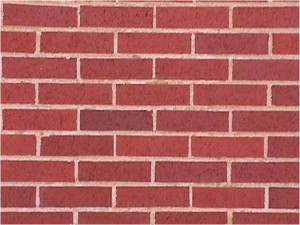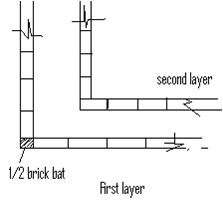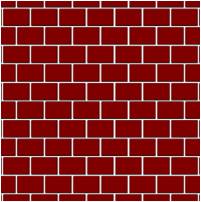Stretcher/Common Bond:
Only used for walls of half brick thickness(partition wall) ,this is the only practical bond which can be used on a wall of this thickness. To break the vertcal continuity, ½ inch brick bat is provided in alternating courses.

Below is the Plan of The stretcher bond .

Header Bond:
This bond is also known as Spanish bond, was a very common bond for bearing walls. It is composed of header bricks, set in rows that are offset, ¾ inch of a brick as a quoin brick in alternating courses, which produces a solid easy to lay bond.

Below is the Plan of first layer and second layer of header bond.

i whant to full bond ditail
What kind of detail you are asking bro ??